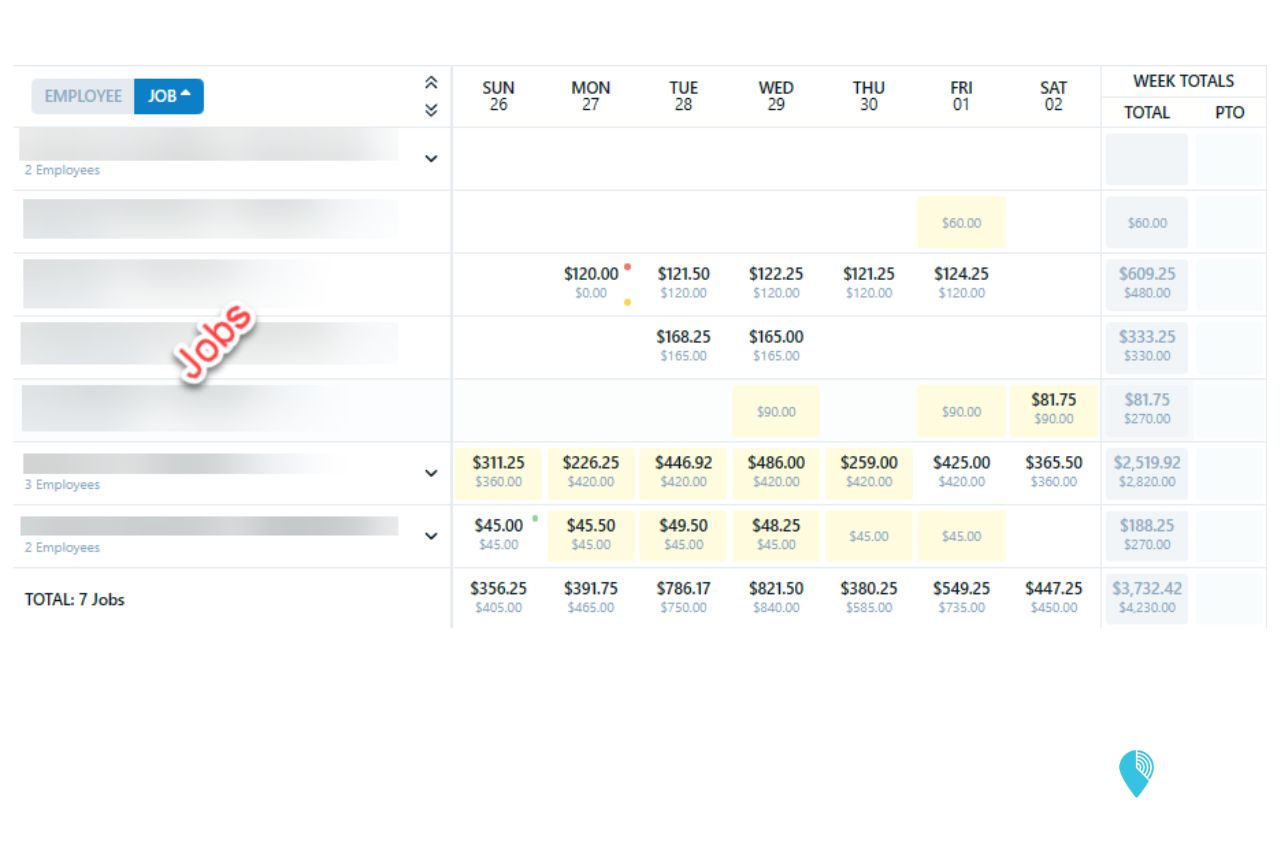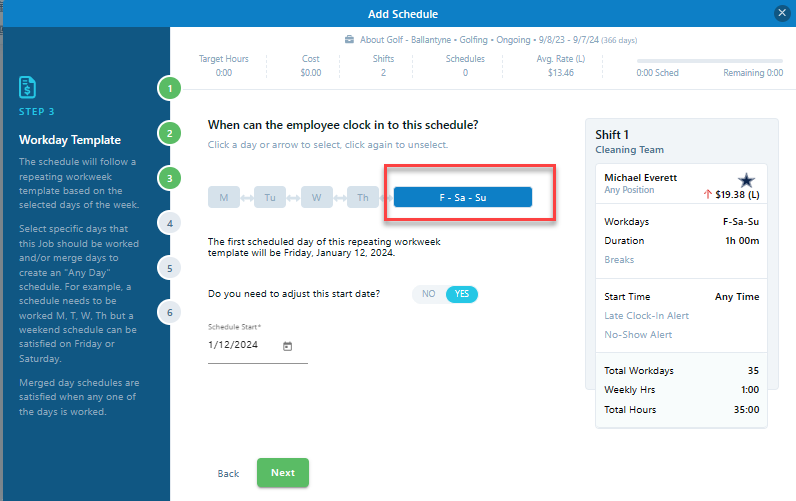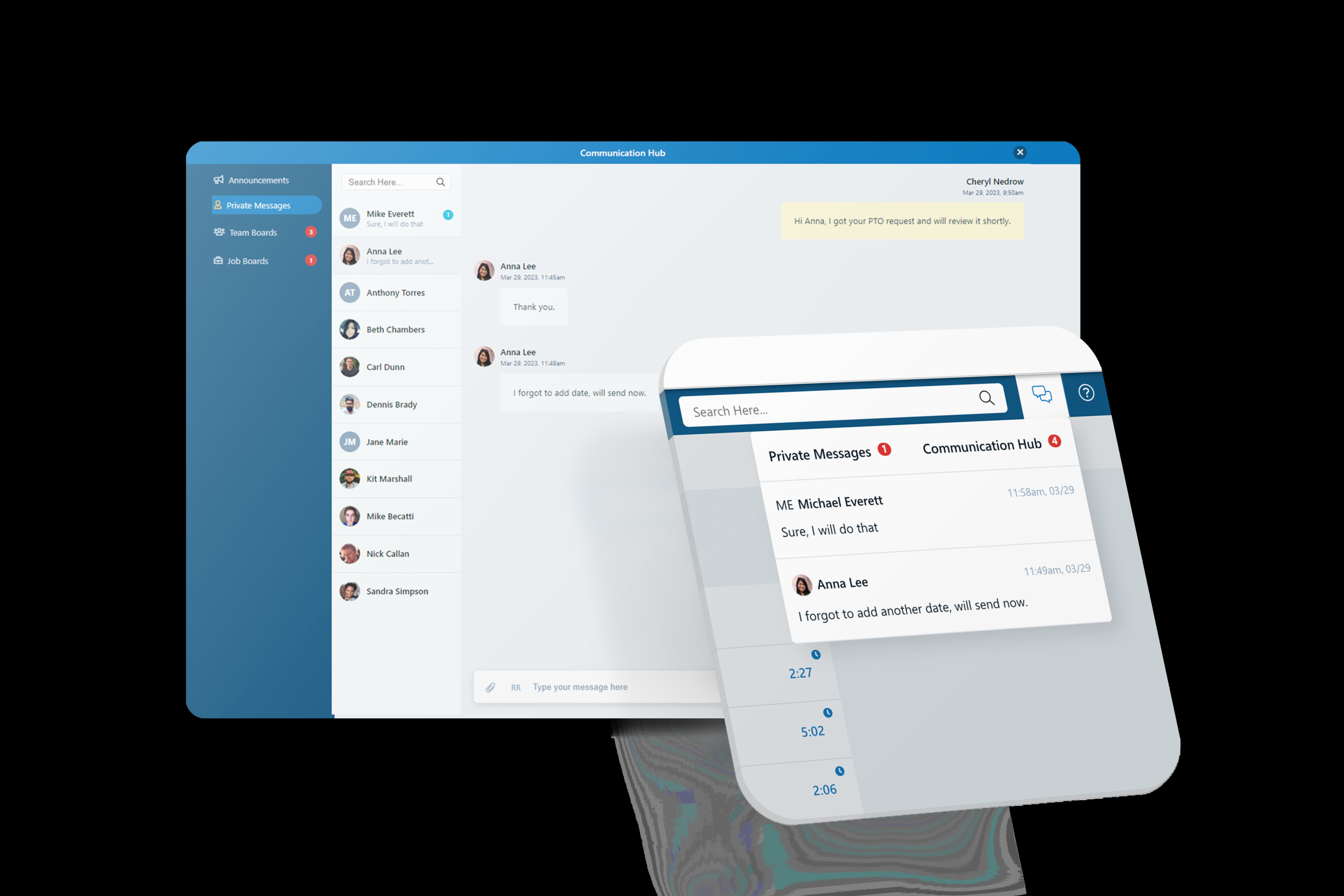Worker Misclassification Woes? A Guide to Avoiding Big Penalties

What does it mean to misclassify workers? Misclassifying employees means incorrectly designating workers as independent contractors or exempt employees, which can violate labor laws. This practice can lead to workers being denied benefits, such as overtime pay, health insurance, or unemployment compensation, which they would otherwise be entitled to.
Misclassifying workers can come at a steep cost. For Handy Technologies, an app-based cleaning and handyman services company, the consequence was a $6 million settlement for its 25,000 misclassified workers in California. The lawsuit alleged Handy misclassified its workers as independent contractors instead of employees and denied them minimum wage and overtime pay benefits. You could face severe fines and back taxes if you overlook this critical distinction. Our guide details the penalties and offers preventive strategies to protect your business from costly errors and a misclassification lawsuit.
Key Takeaways
-
Misclassifying workers as independent contractors instead of employees can result in legal disputes, financial penalties, and reputational damage, emphasizing the need for businesses to classify workers accurately based on IRS guidelines.
-
The IRS imposes strict penalties for misclassification, including back taxes, interest, and fines reaching up to $1,000 per misclassified worker, with potential criminal charges for intentional violations.
-
Employers can use tools like the right-to-control test, seek professional advice to ensure compliance with worker classification rules, use a workforce management solution, and participate in programs like the IRS’s Voluntary Classification Settlement Program (VCSP) to mitigate past misclassification errors.
What We'll Cover
- The Importance of Correct Worker Classification
- Employee vs. Independent Contractor- The Right-to-Control Test
- Implications of Misclassifying Employees
- IRS Penalties for Misclassification of Independent Contractors
- Mitigating the Consequences of Misclassification
- Use Chronotek Pro to Avoid Misclassification While Tracking Workers
- Summary
- FAQs
The Importance of Correct Worker Classification

The correct classification for your workforce is a vital part of maintaining a thriving business. Service-based businesses with remote workers, such as commercial cleaning companies, may mistakenly misclassify workers for various reasons:
-
workers are always off-site
-
workers never report to the office
-
workers drive their own vehicles between job sites
-
workers are paid a piece rate by the job instead of an hourly rate
Many of our commercial cleaning clients choose to pay their part-time janitors on a per-job basis. The company and the employee agree to piece rate work because it doesn't make financial sense for a worker to spend an hour cleaning one building, then travel to another for a 45-minute clean, and be paid $14 an hour before payroll taxes. The employee is away from home for three hours and earns a little over $20 for two hours of work, less the cost of gas. A piece rate arrangement gives employees incentives to work, but on its own, doesn't alter the status of the worker as an employee.
Whether it’s a deceptive and willful violation to evade FICA taxes and employee benefits or a genuine misunderstanding of labor laws, employee misclassification occurs frequently. Studies estimate that 10-30% of Americans are misclassified workers, and independent contractors have doubled from 15.8 million in 2020 to 31.9 million in 2022.
The significance of this error extends beyond mere administrative tasks, potentially impacting a company’s financial liability and reputation in the market. Misclassification, intentional or unintentional, can lead to legal conflicts, financial sanctions, and potential harm to the organization’s reputation.
Employee vs. Independent Contractor- The Right-to-Control Test

The primary classifications for individuals providing services to a business are employees or independent contractors. Understanding these differences is critical to avoid improper classification of workers.
The IRS uses the right-to-control test to classify a worker accurately. This test focuses on behavioral control, financial control, and the nature of the relationship between the worker and the employer. The essential elements are WHAT MUST BE DONE and HOW IT MUST BE DONE.
Guidelines to Determine Between Employees v. Independent Contractors

Are you worried that you have mistakenly classified employees as independent contractors? The Social Security Administration's website lists 20 factors to consider.
-
Actual instruction or direction of worker: when a company has the right to instruct about when, where, and how to work, the worker is ordinarily an employee.
-
Training: indicates control for employers seeking specific methods, while independent contractors use their own approaches, which probably attracted them to the employer.
-
Integration: if a person's services are crucial to a business's success, and their role is integrated into its operation, direction and control by the business owner are likely to present, and an employer-employee relationship exists.
-
Services to be rendered personally: making someone do the work themselves shows control because the employer cares about how the job is done and the results; if the person can bring in someone else without the employer knowing, it suggests less control.
-
Hiring and supervising of assistants: if an employer hires, supervises, and pays workers on a project, it usually indicates control over all of them, suggesting they are employees. However, if a worker hires, supervises, and pays others under a contract for a specific result, they could be considered an independent contractor. But if this is done under the employer's direction, the worker might be acting as an employee or a supervisor.
-
Duration of relationship: an ongoing relationship with the employer suggests employee status, especially when the work is performed at regular intervals, either on the employer's call or when the work is available, even if it's part-time, seasonal, or of short duration.
-
Hours of work: if the employer sets the hours of work, the individual is typically considered an employee, as it indicates a lack of control over one's own schedule, a characteristic associated with independent contractors.
-
Full-Time work: If the worker is expected to commit full-time hours, if the work volume necessitates full-time dedication, or if the employer restricts the worker from working elsewhere, these conditions typically signify an employee status. An independent contractor is free to work when and for whom they choose.
-
Place of work: a requirement that someone do their work at the company's place of business, especially if the work can be done elsewhere, demonstrates the employer's control over the worker, and an employer and employee relationship probably exists.
-
Order of services: an independent contractor can establish their own work patterns, while a company can control the routine of its employees.
-
Reports: requiring regular oral or written reports from a worker is a form of control and indicates an employee/employer relationship. It shows that the employer keeps track of the worker's progress and can decide whether new instructions are necessary based on these reports.
-
Manner of payment: Regular compensation, like hourly, weekly, or monthly pay, often indicates an employer-employee relationship, particularly when it's not a lump sum for a specific job. This suggests the company expects the worker to align their performance with the payment, granting the company control, and the worker agrees to this for a steady income.
-
Payment of business expenses: an employer pays for the business expenses of their employees. An independent contractor pays their own business expenses.
-
Tools and materials: employers generally provide tools and materials for their employees, exercising control over their use. An independent contractor furnishes their own tools.
-
Investment: if someone spends money on tools, equipment, office furniture, machinery, etc., they're probably an independent contractor. Using the company's resources suggests an employer and employee relationship. The investment must be real, essential, and adequate.
-
Profit or loss possibility: in simple terms, if a person has the potential to make a profit or experience a loss based on their work, they are likely an independent contractor. Employees typically don't have such financial stakes. "Profit or loss" here refers to using one's own capital in an independent business, not just earning more from piecework or commissions.
-
Working for a number of people: someone who works for several businesses simultaneously is generally an independent contractor. This person isn't under someone else's control.
-
Availability of services to the public: individuals who market their services to the public are independent contractors. Employees are controlled by their employers and lack the freedom to sell to the public.
-
Right to discharge: the threat of dismissal controls an employee's behavior, while an independent contractor can't be fired as long as they meet contract requirements.
-
Right to quit at any time: an employee can quit at any time without incurring liability. An independent contractor agrees to complete a job and is legally bound to do so.
Despite the potential consequences, companies may classify workers as independent contractors to circumvent various employment-related obligations like payroll taxes and health insurance. This strategy can reduce labor and administrative costs, providing a competitive edge over rivals, but be careful.
Implications of Misclassifying Employees

Employee misclassification can instigate various issues, encompassing legal and financial consequences costing millions of dollars for small business owners. The consequences may involve the repayment of employee benefits, such as:
-
Pension
-
Health insurance
-
Severance pay
-
Paid leave
These are all financial and employment-related considerations that small business owners should carefully review. Moreover, employers may face legal disputes and are responsible for federal and state payroll taxes and Social Security and Medicare taxes for all misclassified employees.
Misclassification can have other consequences, including:
-
Financial implications, such as unpaid overtime costs and minimum wage deficits
-
Harm to a company’s reputation, potentially leading to damaging press
-
Legal consequences, including class action lawsuits and penalties for violating federal protections
Employee misclassification is a form of wage theft, and the federal and state governments are taking notice. For example, the State of New York made wage theft a felony in September 2023.
IRS Penalties for Misclassification of Independent Contractors

The Internal Revenue Service (IRS) can impose penalties for worker misclassification. The penalties include:
-
Back taxes
-
Interest
-
Fines
-
Additional misclassification penalties
The IRS determines the severity of these penalties based on the gravity of the misclassification. Deliberate misclassification refers to the intentional act of an employer misclassifying a worker, which could result in unpaid employment taxes and other penalties.
The consequences, including potential criminal penalties, can be severe, per section 6672 of the Internal Revenue Code. This section authorizes the imposition of additional fines and interest on an employer for failing to file essential tax returns and fulfill the required tax payments and withholdings.
Back Taxes and Interest
Paying back taxes and interest for wrongly classified workers is one potential outcome of misclassification. This includes state and federal payroll taxes employers should have withheld or paid for workers incorrectly categorized as independent contractors instead of employees.
Back taxes for these misclassified workers are calculated considering the income taxes, social security and Medicare taxes, and unemployment taxes the employer failed to withhold and remit. In some cases, up to 40% of the matching FICA taxes that were not withheld and a penalty of $50 per W-2 form not filed may also be factored into the calculation. Even in cases of unintentional misclassification, penalties may involve paying back taxes and interest. As a result, employee misclassification can lead to unpaid tax liability for the employer.
The timeline for the IRS to impose these back taxes is governed by statutes of limitations and specific case circumstances.
Additional Fines and Penalties
Aside from back taxes and interest, intentional or deceitful misclassification of workers could result in fines and further penalties for employers. If the IRS suspects fraud or intentional misconduct, the employer can face substantial fines and penalties, which can be significant depending on the extent of the misclassification.
The consequences of employee misclassification can be severe, including:
-
Fines of up to $1,000 per misclassified worker
-
Imprisonment for up to one year
-
Penalties of up to $10,000 per misclassified worker and imprisonment for one year, in certain situations
Mitigating the Consequences of Misclassification

The IRS's Voluntary Classification Settlement Program (VCSP) allows employers to reclassify workers as employees and offers partial relief from federal employment taxes. Participating in the program and correcting previous misclassifications can help employers lessen the effects of misclassification. Taking part in the VCSP can help in many ways.
How the IRS's VCSP Can Help
-
rectify worker misclassification
-
reduce tax burdens
-
avoid costly assessments of past employment taxes, penalties, and interest
-
offer partial relief for federal employment taxes in cases where employers choose to reclassify their workers as employees.
To participate in this program, individuals must complete and submit Form 8952, Application for Voluntary Classification Settlement Program.
Disputes Regarding Employee Misclassification
In case of disputes, employers can submit Form SS-8 to the IRS to seek a determination of the worker’s status for purposes of federal employment taxes and income tax withholding. While waiting for an IRS determination, employers should treat the worker as an employee rather than an independent contractor, ensuring that all appropriate taxes are withheld. The typical timeframe for receiving a decision from the IRS after submitting Form SS-8 is at least six months.
If taxes are due, employers can use IRS Form 8919 to declare and settle the employee’s portion of Social Security and Medicare taxes.
Employers should promptly correct misclassifications to prevent employee misclassification penalties and additional fines.
Seeking Professional Advice to Properly Classify Workers
For guidance on worker classification, it’s best to consult legal professionals or lawyers specializing in employment law. They can assist in accurately determining the classification of workers as either employees or independent contractors, which has implications for tax obligations such as:
-
Income taxes
-
Social security
-
Medicare taxes
-
Unemployment tax
Furthermore, employment counsel can assist in ensuring compliance with worker classification laws by conducting classification audits, identifying compliance gaps, and offering recommendations on correctly classifying workers based on regulatory standards.
Use Chronotek Pro to Avoid Misclassification While Tracking Workers

Employers should take proactive measures to avoid the risks associated with misclassification. Regularly reviewing the roles and relationships with their workers is critical to ensure accurate classification. Chronotek Pro's online time clock system allows small business owners to classify workers as employees or independent contractors to avoid employee misclassification penalties.
Job Costing with Chronotek Pro

Field service companies have independent contractors clock in and out for job costing and to ensure the work is done, not to control their schedules. Pro's job cost reporting uses employees' loaded pay rates (base rate + payroll taxes + worker's compensation insurance + benefits) but unloaded rates for independent contractors. Chronotek Pro also does not calculate overtime pay for contractors.
Scheduling with Chronotek Pro
Chronotek Pro provides a feature that allows employers to assign "Anytime" shifts to independent contractors and employees. These shifts specify the days of the week when work should be done, but not the exact times. This feature also includes a no-show alert that can be set up at the employer's discretion.
Company schedulers can also create "flexible schedules" for their workers instead of specific days, allowing independent contractors the freedom to set their work plans.

By scheduling all work to be done in Chronotek Pro, by employees and independent contractors, companies can see if they will make money on their job contracts in the future.
Reviewing Worker Relationships with Chronotek Pro's Communication Hub

It's crucial to routinely assess the nature of your relationships with your workers to ensure they are accurately classified in line with tax laws. Open and constructive communication and feedback between managers and employees are key components of fostering positive worker relationships. The Chronotek Pro GPS time clock app has enhanced communication features that allow employees, managers, and admins to stay connected and engaged.
While companies would want to use Chronotek Pro's GPS tracking features for employees, they can disable location tracking requirements for 1099 contractors to minimize a misclassification risk.
Summary

In conclusion, the accurate classification of workers is not just a matter of compliance—it’s essential to maintaining a company’s financial health and reputation. Whether intentional or unintentional, misclassification can lead to significant financial and legal consequences, including back taxes, interest, fines, and additional penalties. Employers can avoid these pitfalls by understanding the differences between employees and independent contractors, regularly reviewing worker relationships, seeking professional advice, utilizing IRS resources, and correcting past misclassifications.
Embracing technology, like Chronotek Pro's workforce management software, is also a best-practice solution, and will help keep the federal government out of your inbox.
FAQs

Q: What are the potential penalties for misclassifying an independent contractor?
A: Misclassification can result in severe consequences, including back taxes, interest, and fines of up to $1,000 per misclassified worker. Deliberate misclassification may even lead to criminal charges.
Q: How does the IRS determine employee classification?
A: The IRS uses the right-to-control test, focusing on behavioral control, financial control, and the nature of the relationship between the worker and the employer. It assesses what must be done and how it must be done.
Q: What tools or programs can employers use to avoid misclassification errors?
A: Employers can use tools like the right-to-control test, seek professional advice, use workforce management solutions, and participate in programs like the IRS’s Voluntary Classification Settlement Program (VCSP).
Q: Why is worker classification essential for service-based businesses with remote workers?
A: Proper classification is crucial for businesses with remote workers to avoid legal disputes, financial penalties, and reputational damage, as misclassification can lead to denial of minimum wage and employment benefits like overtime pay. Independent contractor misclassification impacts the financial and business aspects of an organization.
Q: How can employers determine if they have misclassified employees as independent contractors?
A: The Social Security Administration's website lists 20 factors to consider, such as control over work, training, integration into the business, and the right to discharge, to help employers assess their worker classifications.
Q: What are the potential financial and legal consequences of employee misclassification?
A: Employee misclassification can lead to financial implications like unpaid overtime costs, harm to the company’s reputation, legal consequences including class action lawsuits, and potential employee misclassification penalties of up to $1,000 per misclassified worker.
Q: What penalties can the IRS impose for misclassification of independent contractors?
A: The IRS can impose back taxes, interest, fines, and additional employee misclassification penalties based on the gravity of the misclassification. Deliberate misclassification may lead to criminal penalties.
Q: How can employers mitigate the consequences of misclassification?
A: Employers can participate in the IRS's Voluntary Classification Settlement Program (VCSP), reclassify workers, and correct past misclassifications to reduce tax burdens and avoid costly assessments.
Q: What role does professional advice play in proper worker classification?
A: Seeking guidance from legal professionals specializing in employment law is crucial for accurate classification of workers. They can assist in compliance with tax obligations and conduct classification audits.
Q: How can technology, such as Chronotek Pro, help in avoiding misclassification risks?
A: Chronotek Pro's workforce management software offers features for properly classifying workers and reviewing worker relationships, while also providing tools for job costing and scheduling. Pro is your best solution to avoid employee misclassification penalties.
Conclusion
In conclusion, navigating the complexities of worker classification is paramount for businesses to avoid significant penalties and legal liabilities associated with misclassification. By thoroughly understanding the criteria set forth by regulatory agencies such as the IRS and Department of Labor, employers can accurately classify workers as either employees or independent contractors based on factors such as control, independence, and financial arrangements. Implementing clear policies and contracts that delineate the nature of the working relationship, along with proper documentation of hours worked and compensation, can further support the correct classification of workers. Additionally, seeking guidance from legal counsel or HR professionals can provide invaluable assistance in ensuring compliance with applicable laws and regulations.
Ultimately, proactive measures to avoid worker misclassification not only mitigate financial risks but also uphold ethical standards and foster positive relationships with workers, contributing to the long-term success and reputation of the business.
By embracing these solutions, you can simplify payroll processes, reduce administrative burdens, eliminate time theft, and minimize costly mistakes. Invest in an automated time clock system to save time and money while ensuring accurate and efficient payroll calculations. With the right tools and processes, you can focus on more strategic aspects of your business and watch your profits grow.





